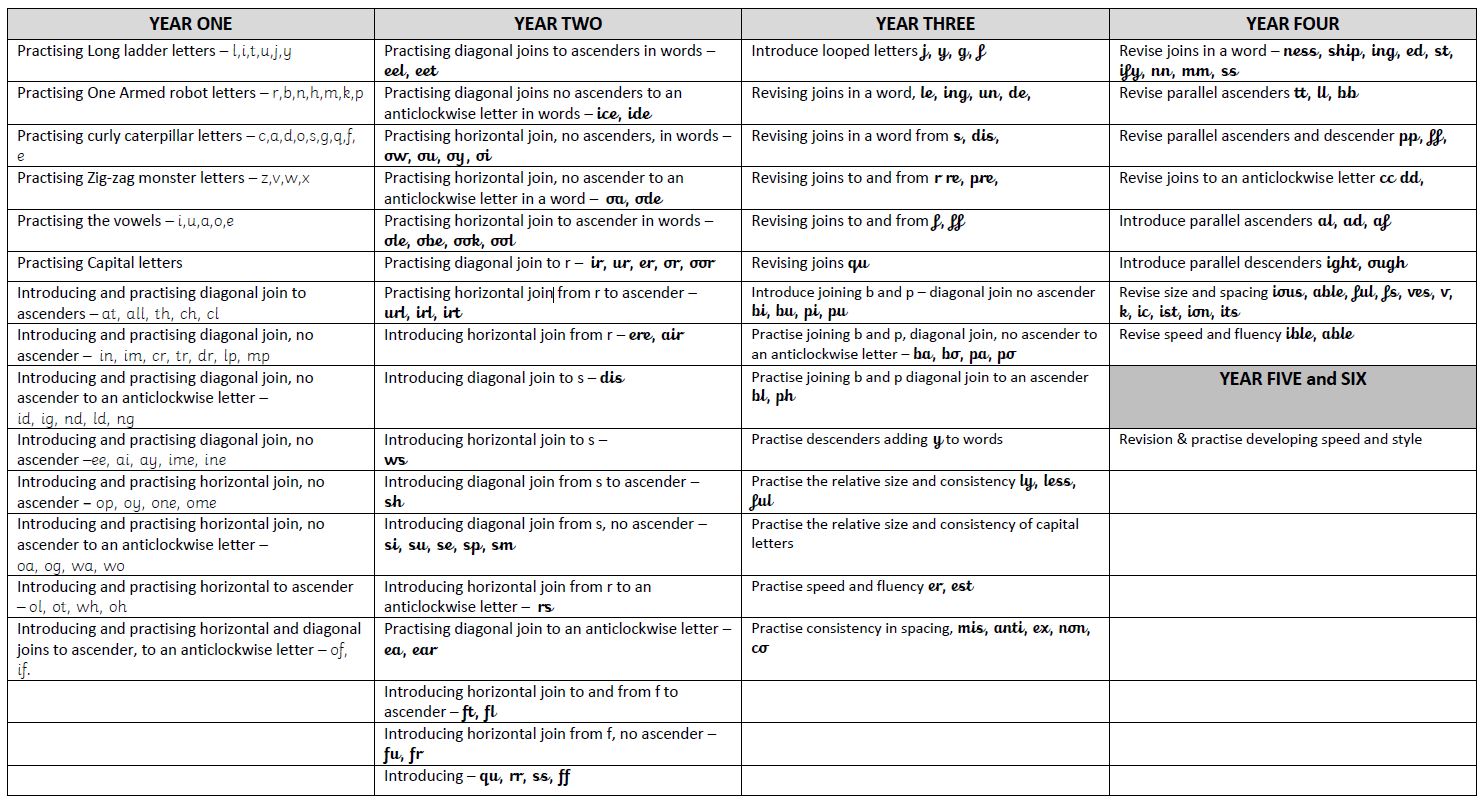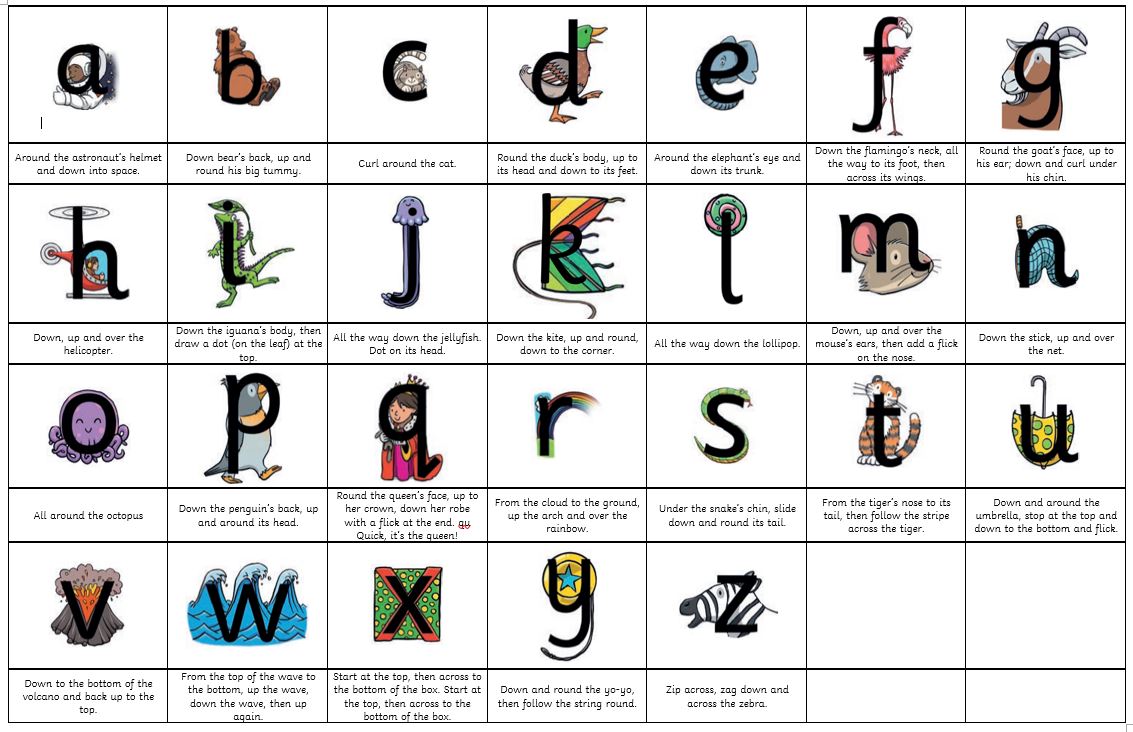Handwriting

Once children have developed the fundamental skills needed to hold and use a pencil effectively, they will begin their journey of forming single recognisable letters.
At Park Lane we start our handwriting journey using block print letters (non cursive). This style of writing ensures that children learn and practise the correct start and end points of each letter.
Once children are able to securely form each individual letter, they will be introduced to joining. Joining letters supports children’s fluency and speed of writing. Letter joining starts once children reach Key Stage One.
Throughout Key Stage 2 children will continue to develop new letter joins, as well as continuing to practise the speed and quality of their handwriting.
When teaching handwriting, children are not taught letters in alphabetical order, but in ‘letter families’. Letter families group together letters that follow similar movement and direction patterns.
Our handwriting families are ‘Long ladders’, ‘one Armed Robots’, ‘Curly Caterpillars’ and ‘Zig Zag monsters’.
Our handwriting is closely linked with our Little Wandles Phonics scheme. Each single letter shape is taught using a Little Wandles catchphrase; a short phrase with a matching picture that helps children visualise and form letter shapes. E.g. a – Astronaut, Around the astronaut’s helmet and down into space. The letter order, formation and catch phrases can be viewed on the below progression document.
Points to note –
When children enter school, not everyone is physically ready to start formalised handwriting. Until this point children will work on physical activities which will develop and strengthen their gross and fine motor strength, which will eventually support them in having a strong pencil grip and the ability to be able to trace, copy and write with ease.
Posture is an important element of successful writing. Children should sit with their feet flat on the floor, their back straight and with relaxed shoulders.

handwriting letterformation.pdf
handwriting progression yrs1 6.pdf
